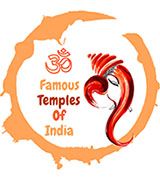Konark Sun Temple 13th Century Gem
Konark Sun Temple, located in Konark, Odisha, India, is a UNESCO World Heritage Site and a remarkable example of ancient Indian architectural and artistic excellence. The temple is dedicated to the sun god Surya and is renowned for its intricate carvings, impressive architecture, and unique design. Here’s more about the Konark Sun Temple:
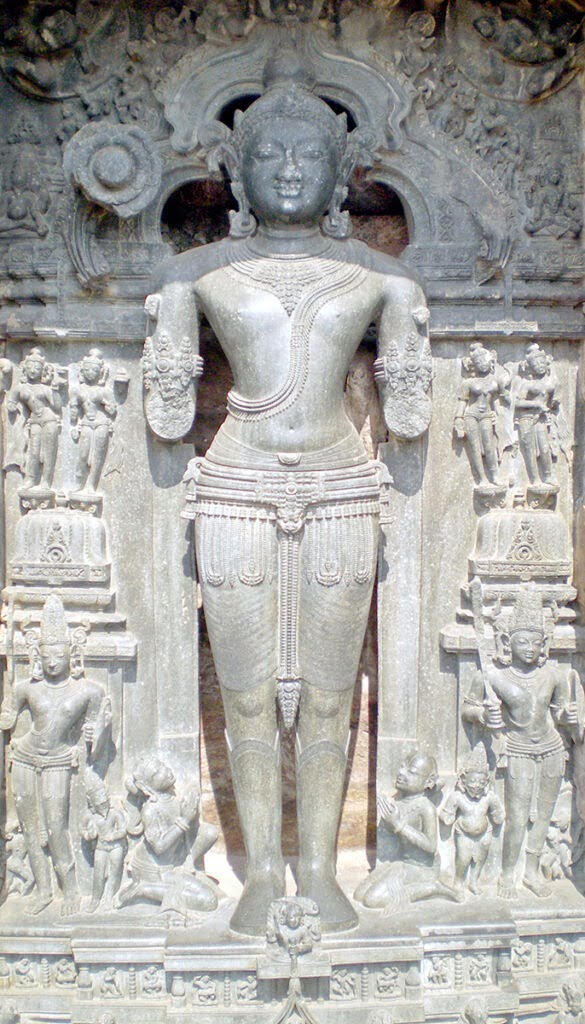
Contents
Architecture:
The Konark Sun Temple was built in the 13th century during the reign of King Narasimhadeva I of the Eastern Ganga Dynasty. The temple is designed in the form of a massive chariot with twelve pairs of exquisitely carved stone wheels and pulled by seven horses, symbolizing the sun god’s chariot traversing the sky.
The main temple structure consists of three parts:
Deul (Sanctuary): The sanctum sanctorum houses the main deity and is surrounded by intricately carved walls.
Jagamohana (Assembly Hall): This hall was meant for gatherings and religious ceremonies. It’s smaller in size compared to the sanctum but also features elaborate carvings.
Nata Mandir (Dancing Hall): This hall was likely used for dancers and musicians performing during religious ceremonies. It’s a beautifully adorned structure with ornate carvings.
Carvings and Artwork:
The Konark Sun Temple is renowned for its rich and detailed carvings that cover nearly every inch of the temple’s exterior. The intricate carvings depict various aspects of life, mythology, animals, celestial beings, and more. The temple is a showcase of exquisite artistry and a testament to the skills of the artisans of that era.
Symbolism:
The temple is not only an architectural masterpiece but also carries deep symbolism. The chariot design represents the sun god’s journey across the sky, while the twelve wheels symbolize the months of the year, the seven horses represent the days of the week, and the carved figures and panels illustrate various stories from Hindu mythology.
Decline and Restoration:
The Konark Sun Temple suffered damage over the centuries due to natural forces, including earthquakes and erosion. The main tower (shikhara) of the temple has collapsed, leaving the sanctuary largely in ruins. However, significant restoration efforts have been made to preserve and protect the remaining structure. The temple’s complex underwent restoration and conservation work to safeguard its unique heritage.
The Konark Sun Temple stands as a marvel of ancient Indian architecture and artistry, drawing visitors from around the world to appreciate its beauty and historical significance. It’s a testament to the creativity, engineering skills, and devotion of the people who built it over 700 years ago.
Explore More>> Tirumala Tirupati Venkateswara Swamy
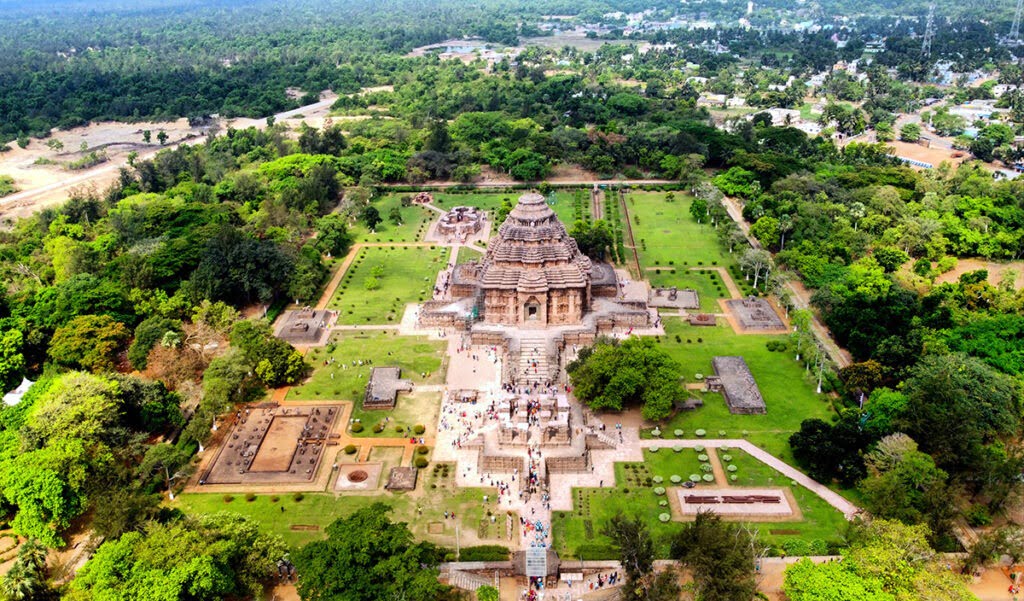
What is the story of Sun Temple?
The Konark Sun Temple has a fascinating story associated with its creation and significance. While there are various legends and historical accounts, one popular story explains the temple’s origin:
Legend of Samba and the Curse:
According to a popular legend, the temple is connected to Samba, the son of Lord Krishna. Samba was cursed with leprosy by Sage Durvasa as a result of his impudent behavior. In his quest for a cure, Samba undertook penance to please the sun god, Surya. As a result of his rigorous penance, Surya was pleased and granted Samba a cure for his ailment.
However, there is a twist to this tale. In some versions of the story, Samba was also cursed by his own father, Lord Krishna, for his behavior. It’s said that Krishna advised Samba to worship the sun god for purification. Surya’s grace eventually cured Samba’s affliction.
As a token of gratitude and devotion, Samba vowed to build a grand temple dedicated to Surya. He chose the location of Konark, which means “corner of the sun” in Sanskrit, as the site for the temple. He commissioned skilled artisans and craftsmen to build a magnificent temple that would honor the sun god and serve as a place of worship.
While the legend of Samba and the curse is one popular narrative associated with the temple’s origin, it’s important to note that historical accounts might vary, and legends often blend with historical facts over time. The Konark Sun Temple’s intricate architecture and carvings reflect not only its spiritual significance but also the artistic achievements of its time.
Explore More>> Shirdi Sai Baba Temple Maharashtra
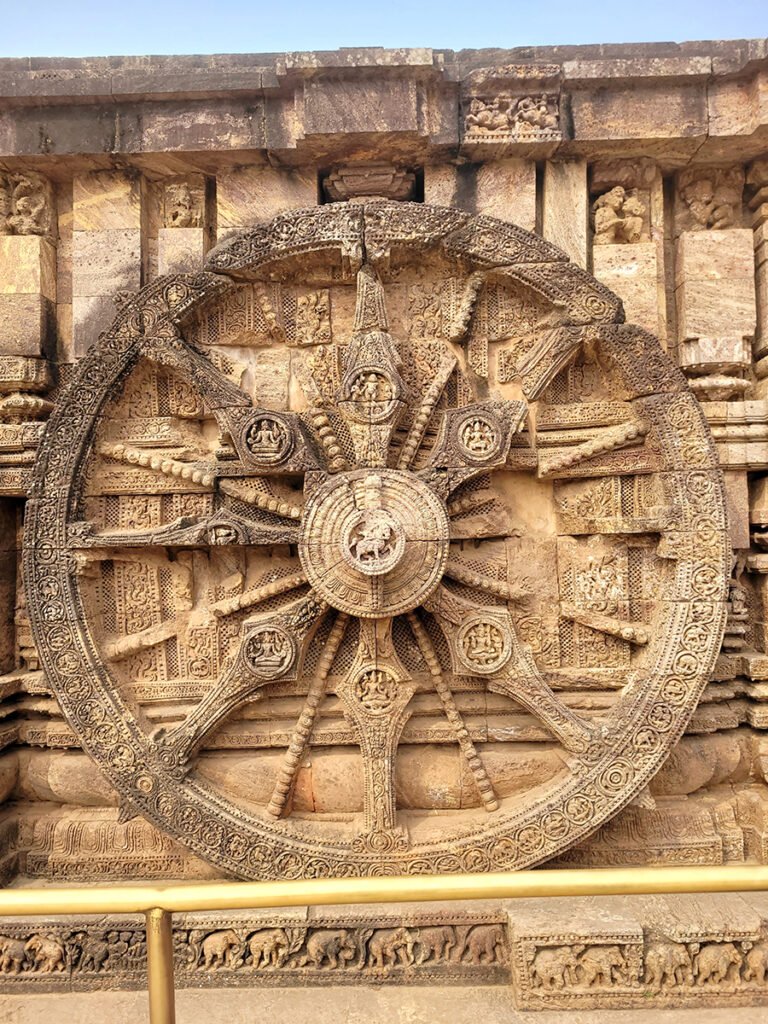
Why was the Konark temple destroyed?
The Konark Sun Temple was not completely destroyed, but it did suffer significant damage over the centuries due to a combination of natural factors, human activities, and historical events. The temple’s decline was a gradual process rather than a single catastrophic event. Here are some of the factors that contributed to the temple’s deterioration:
Natural Causes: The temple, built primarily with stone, was exposed to the elements for centuries. Factors such as erosion, weathering, and seismic activities gradually took a toll on the structure’s integrity.
Changing River Course: The Konark Sun Temple was originally located near the sea, but the shifting course of the river over time brought it closer to the temple. The rising waters and sediment deposits contributed to the temple’s degradation.
Human Activities: In some historical accounts, it’s mentioned that parts of the temple were dismantled by invading Muslim armies. However, this is debated among historians. Even if there were any instances of dismantling, it’s likely that the temple’s deterioration was primarily due to natural processes.
Neglect: After the decline of the Ganga Dynasty, the temple was no longer actively maintained. The absence of proper upkeep and repairs led to the temple’s further deterioration.
Conservation Efforts: In the 19th and 20th centuries, there were efforts to restore and conserve the temple. However, these efforts were often accompanied by challenges due to a limited understanding of conservation techniques at the time.
Restoration Work: In more recent times, the Archaeological Survey of India (ASI) has been actively involved in the conservation and restoration of the Konark Sun Temple. Various projects have aimed to stabilize the structure, protect its carvings, and address the challenges posed by environmental factors.
Explore More>> Kalmadhava Shakti Peeth Amarkantak
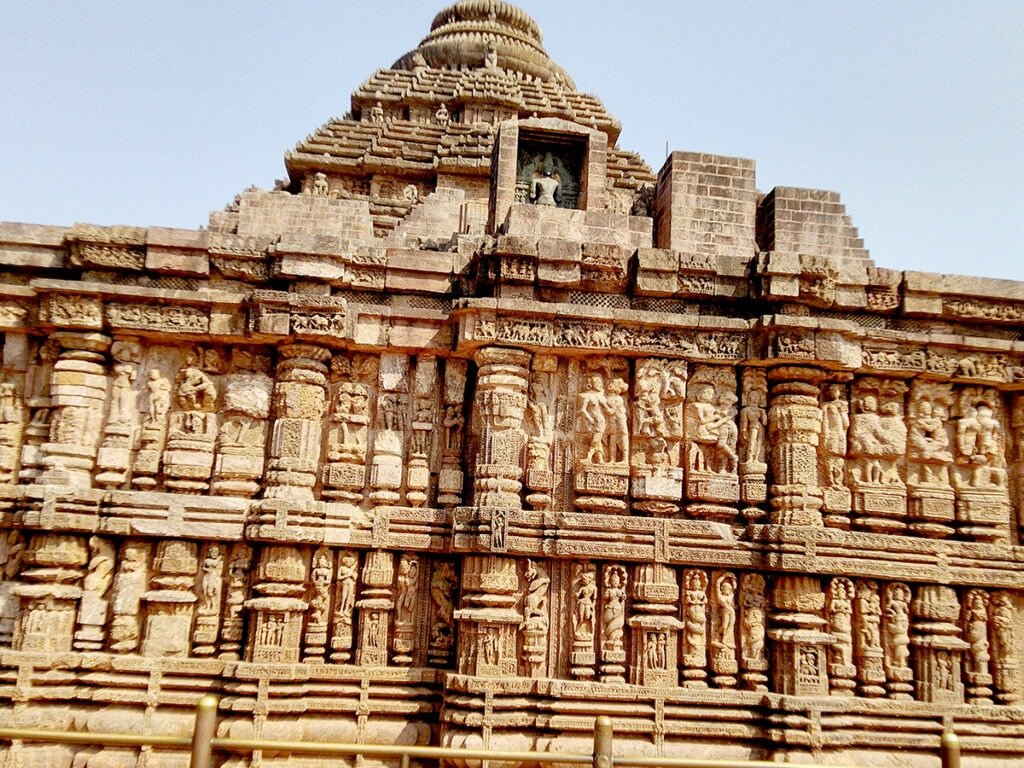
Why is Konark temple filled with sand?
The Konark Sun Temple is filled with sand because it was filled with sand by the British in 1903 to prevent the structure from collapsing. The temple was built in the 13th century and is one of the most important architectural and cultural monuments in India. However, it has been in a state of decline for centuries due to a combination of factors, including natural disasters, neglect, and vandalism.
In 1900, the British colonial government undertook a preservation project for the temple. As part of this project, they decided to fill the Jagamohan, or assembly hall, with sand in order to provide support to the structure. The sand was filled in through four entrances to the Jagamohan and was thought to be a temporary measure. However, it has remained in place ever since.
In recent years, there have been calls to remove the sand from the Jagamohan. This is because the sand has caused damage to the structure and is preventing archaeologists from studying it. In 2020, the Archaeological Survey of India (ASI) announced that it would begin removing the sand from the Jagamohan. The process is expected to take three years.
The removal of the sand from the Jagamohan is a complex and delicate operation. The ASI is taking a number of precautions to ensure that the structure is not damaged. These precautions include using a slow and controlled process, monitoring the structure for any signs of damage, and using a variety of materials to support the structure.
The removal of the sand from the Jagamohan is a significant step in the preservation of the Konark Sun Temple. It will allow archaeologists to study the structure in more detail and will help to prevent further damage. It is also a symbolic gesture of the Indian government’s commitment to preserving its cultural heritage.
Explore More>> Arupadai veedu | Six Abodes of Lord Murugan
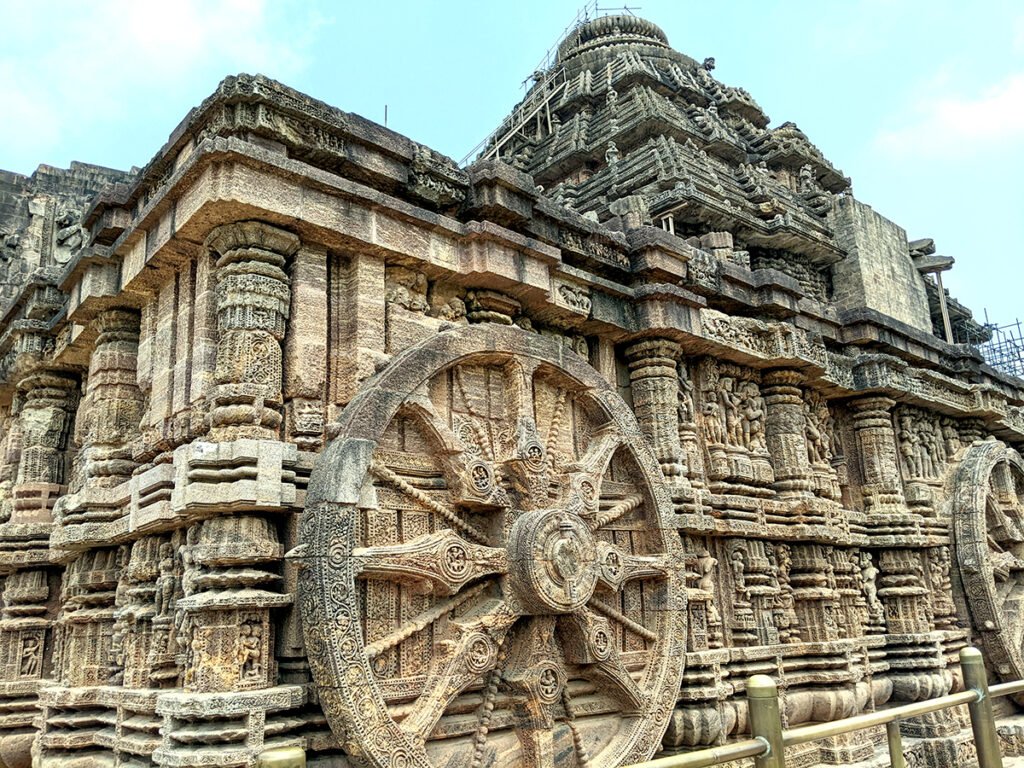
Places to visit near Konark Sun Temple:
Chandrabhaga Beach: Located just a short distance from the Konark Sun Temple, Chandrabhaga Beach is known for its natural beauty and serene atmosphere. It’s a popular spot for relaxation and enjoying the coastal scenery.
Ramachandi Temple: This temple is dedicated to Goddess Ramachandi and is situated on the banks of the Kusabhadra River. The temple’s location offers picturesque views, and it’s a peaceful place to visit.
ASI Museum, Konark: This museum is located near the Konark Sun Temple and houses a collection of sculptures and artifacts from the temple complex. It provides insights into the art and history of the region.
Konark Beach: The Konark Beach is another beautiful coastal area where you can relax and enjoy the ocean breeze. It’s a great place for a leisurely stroll or to witness the stunning sunrise or sunset.
Kuruma: A short drive from Konark, Kuruma is known for its intricate stone carvings and sculptures. The Archaeological Survey of India (ASI) maintains the site, which is home to ancient Buddhist and Jain relics.
Pipli: Pipli is famous for its appliqué work, which involves creating decorative designs on fabrics. You can explore colorful markets with a wide variety of handicrafts, textiles, and traditional artwork.
Astranga: Astranga is a fishing village located nearby. It’s a great place to experience the local fishing culture, witness the bustling fish market, and enjoy the sight of traditional fishing boats.
Balukhand Wildlife Sanctuary: Situated along the coastline, this sanctuary is home to various species of wildlife, including deer, elephants, and a variety of bird species. It’s a nice place for nature enthusiasts.
Puri: Puri, located not far from Konark, is a major pilgrimage site and a famous beach destination in Odisha. The Jagannath Temple, Puri Beach, and the vibrant local markets are some of the attractions here.
How to reach Konark Sun Temple:
By Air:
The nearest major airport is Biju Patnaik International Airport in Bhubaneswar, which is about 65 kilometers away from Konark. From the airport, you can hire a taxi or use other local transportation options to reach Konark.
By Train:
The nearest railway station to Konark is Puri Railway Station, which is around 35 kilometers away. Puri is well-connected to major cities in India. From Puri, you can hire a taxi, take a bus, or use other local transportation to reach Konark.
By Road:
Konark is well-connected by road to various cities in Odisha and neighboring states. You can use state-run buses, private buses, or hire a taxi to reach Konark. The roads are generally in good condition, making road travel a convenient option.
Local Transportation:
Within Konark, you can use auto-rickshaws, cycle-rickshaws, or hire taxis to move around the town and visit nearby attractions. Many hotels also offer transportation services for their guests.
Tour Packages:
There are also tour packages available that cover Konark and other nearby attractions. These packages might include transportation, guided tours, and sometimes accommodations as well.
Tips:
- Make sure to check the latest travel information, including road conditions and transportation availability, before your trip.
- Consider the time of year you’re visiting, as weather conditions can affect travel.
- It’s advisable to have some local currency for transportation and other expenses.
